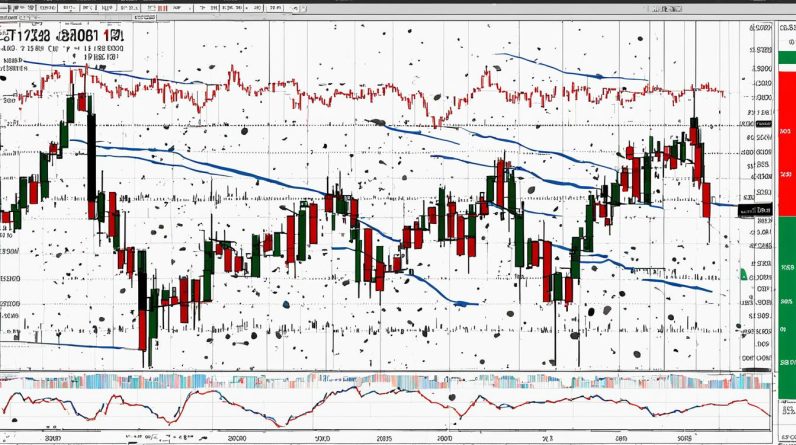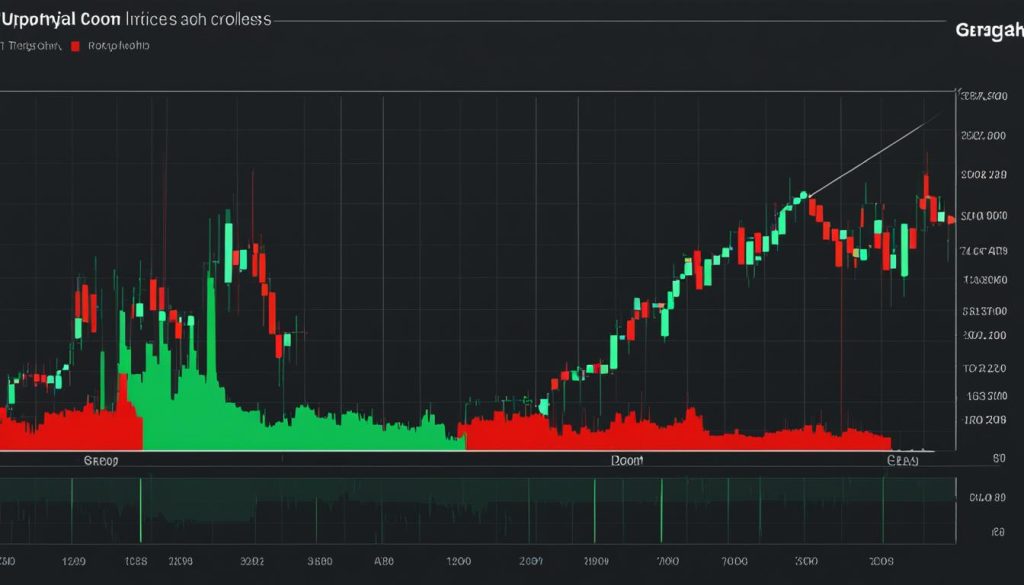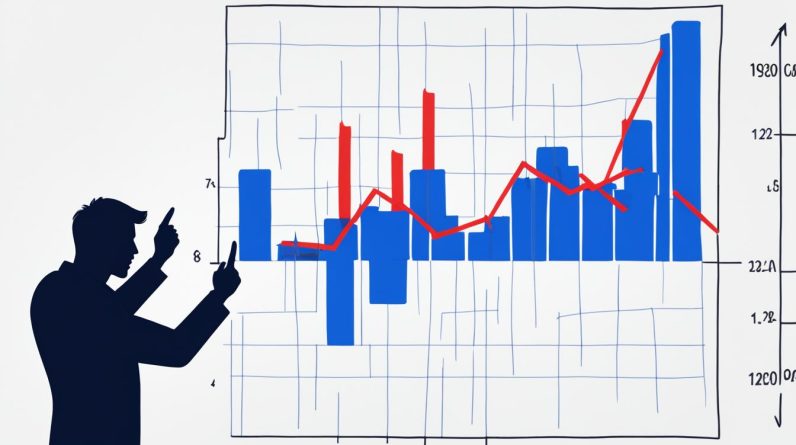
Welcome to our comprehensive guide on mastering the boom and crash 1 minute strategy for trading boom and crash indices. Whether you’re new to the world of Forex or an experienced trader, this article will provide you with valuable tips and secrets to improve your trading skills and navigate the high-risk, high-reward world of boom and crash trading.
Boom and crash trading involves profiting from the fluctuations in market prices, and it is an exciting but challenging strategy. In this article, we will cover everything you need to know about trading boom and crash indices, including when to enter and exit trades, key indicators to watch out for, and effective risk management techniques.
By the end of this article, you’ll have a deep understanding of the boom and crash 1 minute strategy and be ready to take on the markets with confidence. So let’s get started!
Table of Contents
Key Takeaways:
- Mastering the boom and crash 1 minute strategy is crucial for trading boom and crash indices.
- Understanding when to enter and exit trades, as well as using reliable indicators, is key to success.
- Implementing effective risk management techniques can help minimize losses and protect your capital.
- Trading boom and crash indices requires patience, discipline, and adherence to a predetermined plan.
- With practice and the right strategies, you can maximize your profits and potentially achieve significant returns on your investments.
Introduction to Synthetic Indices
Synthetic indices are generated using a random number generator and accurately mirror real-world financial markets. These simulated trading instruments offer traders the opportunity to participate in various markets, including Forex, Indices, Commodities, and Cryptocurrencies, through a single platform.
One popular type of synthetic index is the boom and crash index, offered exclusively by the Deriv broker. These indices track the fluctuations and volatility of different markets, providing traders with unique trading opportunities and diverse risk levels.
Unlike traditional financial instruments, synthetic indices allow traders to take smaller positions and trade at lower costs. This makes them accessible to a wide range of traders, including those with limited capital. Furthermore, the availability of synthetic indices provides non-stop trading opportunities and flexibility, as they are available 24/7.
The graphical representation below illustrates the correlation between synthetic indices and volatility indices:
| Synthetic Indices | Volatility Indices |
|---|---|
| Generated using a random number generator | Offers trading opportunities during high volatility periods |
| Simulates various real-world markets | Allows traders to hedge their positions |
| Available 24/7 | Trades based on continuous real-time prices |
| Offers diverse risk levels | Provides potential profits from market fluctuations |
In summary, synthetic indices like the boom and crash indices provide traders with a unique opportunity to trade various markets through a simulated trading instrument. With their accessibility, flexibility, and diverse risk levels, these indices have become increasingly popular among traders.
What are Boom and Crash Indices?
Boom and crash indices are financial derivatives offered by the Deriv broker that allow traders to capitalize on market price fluctuations. These indices are based on well-known markets such as Forex, Indices, Commodities, and Cryptocurrencies. With boom and crash indices, traders can take advantage of sudden spikes and breakdowns in prices, potentially generating significant profits within one-minute timeframe charts.
The Deriv broker offers six types of boom and crash indices, each representing different levels of market volatility:
| Boom Indices | Crash Indices |
|---|---|
| Boom 300 | Crash 300 |
| Boom 500 | Crash 500 |
| Boom 1000 | Crash 1000 |
Boom indices signify sudden spikes in the market, indicating a surge in prices. On the other hand, crash indices represent abrupt breakdowns in prices. These fluctuations make boom and crash indices dynamic and appealing to traders seeking fast-paced trading opportunities.
When trading boom and crash indices, it is crucial to carefully analyze market trends, indicators, and other relevant factors in order to make informed trading decisions. By understanding the behavior of these indices and employing effective trading strategies, traders can potentially capitalize on the volatility and generate profitable returns.
Top Secret Tips on How to Trade Boom and Crash Indices
When it comes to trading boom and crash indices, many traders often resort to scalping in search of quick profits. However, this strategy is not recommended due to the high level of risk involved. To truly excel at trading these indices, it is important to approach them like regular Forex instruments and employ effective strategies.
One of the top secrets to successful trading is zooming out to higher timeframes. By doing so, you can gain a broader perspective and identify significant levels of support and resistance. These key levels can help you make more informed decisions when entering or exiting trades.
Furthermore, waiting for breakouts and confirming trends before entering the market can greatly enhance your chances of success. This approach allows you to avoid false signals and enter trades with greater confidence.
When trading boom indices, it is advisable to go long, while when trading crash indices, going short is often more profitable. By aligning your positions with the respective market directions, you can maximize your gains and minimize your losses.
These strategies should be complemented by reliable indicators such as the Relative Strength Index (RSI), Moving Average Convergence Divergence (MACD), and Moving Averages. These indicators can provide confirmation and additional insights into market trends and potential reversals.
Remember, trading boom and crash indices requires careful analysis and a disciplined approach. It is crucial to practice proper risk management techniques and avoid letting emotions dictate your trades.
Trading boom and crash indices successfully involves a combination of technical analysis, patience, and adhering to a predetermined strategy. By following these top secret tips, you can increase your chances of profitability and navigate the dynamic nature of these indices with confidence.
Example Trading Strategy:
Here’s an example of a trading strategy that implements these top secret tips:
| Step | Action |
|---|---|
| 1 | Zoom out to higher timeframes (e.g., 15 minutes or 1 hour) to identify key support and resistance levels. |
| 2 | Wait for a breakout above a resistance level (for boom indices) or below a support level (for crash indices). |
| 3 | Confirm the breakout with indicators such as RSI, MACD, and Moving Averages. |
| 4 | Enter a long position for boom indices or a short position for crash indices. |
| 5 | Set a stop-loss order below the breakout level to limit potential losses. |
| 6 | Monitor the trade closely and consider taking profits at predetermined levels or based on your analysis. |
By following this example strategy and tailoring it to your trading style, you can improve your chances of success when trading boom and crash indices.

Pros of Trading Boom & Crash Indices
Trading boom and crash indices offers numerous advantages for both beginner and experienced traders. Let’s explore the key benefits:
- Low minimum deposit: One of the major advantages of trading boom and crash indices is the low minimum deposit requirement. This accessibility makes it an ideal choice for beginners who want to start with small trades and minimize risk. By starting small, traders can gain valuable experience and gradually increase their investments.
- Non-stop trading opportunities: Boom and crash indices are available 24/7, allowing traders to take advantage of non-stop trading opportunities. This means that regardless of your location or time zone, you can engage in trading at any time that suits you. This flexibility is particularly beneficial for those who cannot commit to specific trading hours.
- Short-term duration: Unlike other market instruments that may have longer trading durations, boom and crash indices are specifically designed for short-term trading. This allows traders to engage in quick trades and potentially profit from rapid market fluctuations. The short-term nature of these indices appeals to those who prefer fast-paced trading.
- Technical analysis focus: Trading boom and crash indices primarily relies on technical analysis rather than requiring an in-depth understanding of fundamental market factors. This means that traders can focus on studying price patterns, trends, and indicators to make informed trading decisions. This makes it accessible for individuals who are new to trading or do not have extensive financial knowledge.
With all these advantages, it’s clear that trading boom and crash indices offer compelling opportunities to diversify your portfolio and potentially generate profits. Take advantage of the low minimum deposit, non-stop trading opportunities, and short-term duration to maximize your trading potential.
Crash 1000 Index Strategy: Trade Successfully Without Losing Funds
When it comes to trading the Crash 1000 index, having a well-defined strategy is crucial for success. By combining the power of the average true range indicator and specific candle conditions, traders can identify profitable opportunities and minimize the risk of losing funds.
The average true range indicator (ATR) helps in measuring market volatility, providing traders with valuable insights into potential price movements. By incorporating ATR into your trading strategy for the Crash 1000 index, you can better gauge the market’s mood and adjust your positions accordingly.
However, it’s essential to pay close attention to specific candle conditions when executing trades. Observing spikes in the market and identifying patterns that indicate potential success can greatly improve your trading outcomes. This includes analyzing the formation of candlestick patterns, such as dojis, engulfing patterns, and hammers, and using them in conjunction with the ATR indicator.
One important note is to avoid scalping small candle movements with large lot sizes. While it may seem tempting to capture every small price fluctuation, doing so can increase the risk of losing your entire account. It’s crucial to maintain proper position sizing and risk management techniques to protect your capital.
Remember, trading the Crash 1000 index requires patience, discipline, and a well-defined strategy. By carefully observing market spikes, identifying patterns, and managing your risk effectively, you can trade successfully without losing funds.
Crash 1000 Index Strategy Example
Here’s an example of a Crash 1000 index strategy that has proven to be effective:
- Use the ATR indicator to determine the average range of price movement for the Crash 1000 index.
- Wait for a significant spike in the market, indicating a potential breakout.
- Confirm the breakout by observing specific candlestick patterns, such as bullish engulfing patterns or hammer formations.
- Enter a long position if the breakout confirms an upward trend and shows strong buying momentum.
- Set a stop-loss order below the recent swing low to protect your capital in case the market reverses.
- Take profit once the price reaches a predetermined target level or when the market shows signs of a potential reversal.
By following this strategy, traders can trade the Crash 1000 index with confidence and increase their chances of generating profits.
| Advantages of the Crash 1000 index strategy: | Disadvantages of the Crash 1000 index strategy: |
|---|---|
| 1. Capitalizes on market volatility | 1. Requires a sound understanding of technical analysis |
| 2. Offers potential high returns | 2. Involves higher risk compared to other trading strategies |
| 3. Can be used in conjunction with other indicators | 3. Requires patience and disciplined execution |
| 4. Provides opportunities for both long and short positions | 4. May experience periods of low volatility |

Using this Crash 1000 index strategy, traders can increase their chances of success while safeguarding their capital. Remember to always backtest and practice the strategy on a demo account before implementing it with real funds.
How to Grow Your Investment with Boom and Crash
To grow your investment with boom and crash indices, you need a strategic approach that maximizes your potential returns. By focusing on specific indicators and utilizing the one-minute time frame, you can effectively navigate the volatile market and seize profitable opportunities.
Start by incorporating indicators such as MACD, RSI, and moving averages into your trading strategy. These tools can provide valuable insights and help you make informed decisions. For example, the MACD indicator can identify potential trend reversals and generate buy or sell signals, while the RSI indicator can indicate overbought or oversold conditions.
Additionally, the one-minute time frame is ideal for boom and crash trading as it allows you to capture rapid price movements. This time frame enables you to act quickly and take advantage of the spikes in the market, increasing your potential for profitable trades.
When trading boom and crash indices, it’s important to focus on buying in the boom market and setting a timeframe for exiting if the market doesn’t move in the desired direction. This approach allows you to capitalize on upward trends while minimizing potential losses during market downturns.
Furthermore, exercising patience and sticking to a predetermined strategy are critical for long-term success. The boom and crash market can be highly volatile, and emotions can often lead to impulsive decisions. By staying disciplined and following your strategy, you can effectively manage risk and improve your chances of growing your investment.
Remember, growing your investment requires a combination of technical analysis, strategic decision-making, and risk management. By implementing these practices and staying focused on your goals, you can navigate the boom and crash market with confidence.
Key Points:
- Use indicators like MACD, RSI, and moving averages
- Utilize the one-minute time frame to capture rapid price movements
- Focus on buying in the boom market and setting an exit timeframe
- Exercise patience and stick to a predetermined strategy
The Importance of Risk Management in Boom and Crash Trading
Risk management plays a crucial role in boom and crash trading as it directly impacts the protection of your capital. As a trader, it is essential to implement effective risk management techniques to safeguard your investments and enhance profitability. Here are some key strategies to consider:
- Start with Small Amounts: When starting out in boom and crash trading, it is advisable to begin with smaller amounts. This allows you to gain experience and understand the dynamics of the market without risking significant capital.
- Gradually Increase Investment: As you become more comfortable and confident in your trading abilities, you can gradually increase your investment. This gradual approach helps mitigate potential losses and minimizes the overall risk exposure.
- Have a Solid Trading Plan: Develop a well-defined trading plan that outlines your entry and exit points, risk tolerance, and overall trading strategy. A clear plan provides structure and discipline, helping you make informed decisions based on market conditions.
- Monitor Progress and Adjust Strategies: Continuously monitor your trading progress and evaluate the effectiveness of your strategies. If necessary, make adjustments to your approach based on market trends and performance analysis.
- Set Entry and Exit Points: Determine specific entry and exit points for your trades to limit potential losses and protect your capital. These points should be based on technical analysis, trend indicators, and market conditions.
- Cut Losses: It is essential to know when to cut your losses and exit a trade if it is not moving in the desired direction. Setting stop-loss orders helps minimize potential losses and prevents significant drawdowns.
- Utilize Analysis Tools: Incorporate reliable analysis tools and indicators into your trading strategy. Technical analysis tools like moving averages, RSI (Relative Strength Index), and MACD (Moving Average Convergence Divergence) can provide valuable insights and aid in decision-making.
Remember: While risk management techniques are important, it is crucial to acknowledge that trading boom and crash indices involves inherent risks. There are no guaranteed profits, and losses are possible. However, implementing effective risk management techniques can significantly increase your chances of success and protect your capital over the long term.
| Benefits of Effective Risk Management | Approach |
|---|---|
| Protecting Your Capital | Starting with smaller amounts, setting entry and exit points, and cutting losses helps protect your capital from significant drawdowns. |
| Enhancing Profitability | By implementing risk management strategies, you can reduce overall risk exposure and increase the potential for profitable trades. |
| Improving Decision-Making | A well-defined trading plan, monitoring progress, and utilizing analysis tools help in making informed decisions based on market conditions. |
| Minimizing Emotional Trading | When you have a solid risk management plan in place, it helps reduce impulsive and emotional trading decisions, ensuring discipline and consistency. |
Conclusion
Trading boom and crash indices can be a highly profitable venture when approached with the right strategies and risk management techniques. By implementing the tips and secrets shared in this article, traders have the potential to maximize their profits and minimize their losses.
It is crucial to exercise patience and discipline in trading boom and crash indices. With a well-defined, predetermined plan and a focus on risk management, traders can navigate the volatility of these markets and increase their chances of success.
One effective way to enhance trading skills is to practice with a demo account. This allows traders to familiarize themselves with the specificities of boom and crash indices without risking their capital. Through practice and continuous learning, traders can refine their strategies, identify patterns, and make informed decisions.
Incorporating risk management techniques is key to protecting investments. Setting clear entry and exit points, cutting losses when necessary, and using analysis tools can help traders navigate the uncertainties of the market. Remember, while there are no guarantees in trading, good risk management techniques can significantly improve profitability.
FAQ
What is the boom and crash 1 minute strategy?
The boom and crash 1 minute strategy is a high-risk, high-reward trading strategy in Forex that focuses on trading boom and crash indices within a one-minute timeframe.
What are synthetic indices?
Synthetic indices are simulated trading instruments that mimic real-world financial markets. They are generated using a random number generator and audited by third-party auditors for accuracy.
What are boom and crash indices?
Boom and crash indices are financial derivatives offered by the Deriv broker. These indices track the fluctuations of various markets such as Forex, Indices, Commodities, and Cryptocurrencies, and offer opportunities for smaller positions at lower costs and various risk levels.
What trading strategies should I use for boom and crash indices?
It is recommended to trade boom and crash indices like regular Forex instruments. This involves zooming out to higher timeframes, identifying levels of support and resistance, waiting for breakouts, and confirming trends before entering the market. Reliable indicators like RSI, MACD, and Moving Averages can also be used for confirmation.
What are the advantages of trading boom and crash indices?
Trading boom and crash indices allows for starting with small trades at low risk, requires only technical analysis without a fundamental understanding of the market, has no minimum deposit requirement, provides non-stop trading opportunities, and offers low spreads and potential for fast returns.
How can I successfully trade the Crash 1000 index?
To trade the Crash 1000 index successfully, it is important to use a specific trading strategy involving the average true range indicator and specific candle conditions. This strategy focuses on observing spikes in the market and identifying patterns that result in successful trades without losing funds.
How can I grow my investment with boom and crash indices?
To grow your investment with boom and crash indices, focus on using specific indicators like MACD, RSI, and moving average. Trade in the boom market and set exit points if the market doesn’t move in the desired direction. Patience and sticking to a predetermined strategy are crucial for long-term success.
What is the importance of risk management in boom and crash trading?
Risk management is crucial in boom and crash trading to protect your capital. Start with small amounts and gradually increase investment as you gain more experience. Have a solid trading plan, monitor progress, and adjust strategies as needed. Setting entry and exit points, cutting losses, and using analysis tools are essential for successful trading.
How can I maximize profits and minimize losses when trading boom and crash indices?
By following the tips and secrets shared in this article, traders can maximize their profits and minimize losses. Having patience, sticking to a predetermined plan, incorporating good risk management techniques, and practicing with a demo account can lead to successful trading and potential significant returns on investments.
Source Links
- https://www.keenbase-trading.com/top-secret-on-how-to-trade-boom-and-crash-indices/
- https://eightify.app/summary/cryptocurrency-investing/crash-1000-index-trading-master-the-strategy-preserve-your-funds
- https://eightify.app/summary/trading-and-investing/effective-strategies-to-grow-your-investment-with-boom-and-crash-in-4-days

